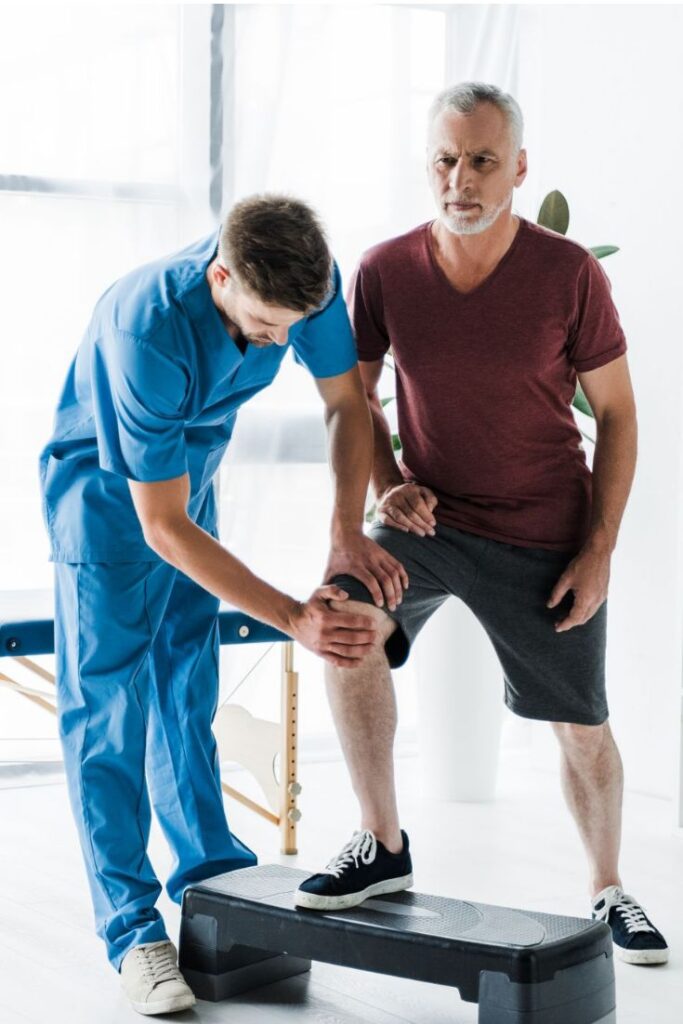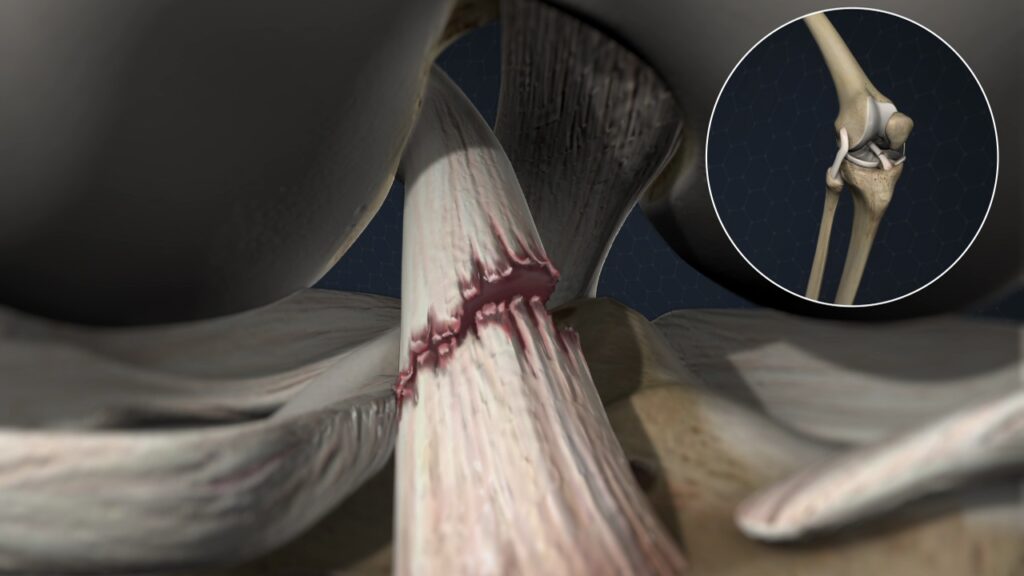Introduction:
Anterior Cruciate Ligament Injury commonly results from a fall from height with the knee in flexion and the body rotating on the stationary foot. This results in abnormal internal rotation of it tibia. Similarly, hyper flexion or hyperextension with internal rotation of the tibia can also produce it.
Mechanism of injury:
Anterior Cruciate Ligament Injuries typically occur due to sudden twisting, pivoting or hyperextension movements of the knee. Common scenarios include:
- Contact injuries: Direct blow to the knee, often from the side or behind, forcing the knee into an unnatural position.
- Non- contact injuries: Rapid deceleration, sudden changes in direction, and awkward landings from jumps or sudden stopping during sports. These account for the majority of ACL tears.
Clinical Feature:
- Instability: A feeling of the knee “giving way “or buckling, especially during pivoting or testing motions.
- Audible “POP”: Many individuals report hearing or feeling a distrinct ”POP” at the time of injury.
- Immediate Pain: Sharp, intense pain in the knee, often making weight-bearing difficult.
- Swelling: Rapid onset of knee swelling (hemarthrosis) within a few hours due to bleeding within the joint.
Sign & Symptoms:
Beyond the clinical features, specific signs and symptoms include:
- Pain and tenderness around the knee joint.
- Limited range of motion in the knee.
- Difficulty bearing weight on the affected leg.
- Instability during activities requiring pivoting or cutting.

Physiotherapy Management:
Physiotherapy is crucial for non- surgical and post-surgical ACL rehabilitation. Key aspect includes:
- Restoration of Range of Motion: Gentle exercise to regain movement.
- Pain and Swelling Management: CRICE protocol (Rest, Ice, Compression, Elevation), electrotherapy and manual therapy.
- Proprioception and Balance Training: Exercises to enhance balance and joint position sense, crucial for preventing re-injury.
- Strengthening Exercises: Progressive strengthening of hamstrings, gluteal and quadriceps muscles to improve knee stability.
- Patient Education: Guidance on activity modification, proper warm-up techniques and injury prevention strategies.
Diet & Nutrition Tip:
A balanced diet rich in protein, calcium, vitamin C, and omega-3 fatty acids can significantly aid ligament healing and muscle repair. Include foods like fish, eggs, leafy greens, citrus fruits, and nuts to support faster recovery.
Conclusion:
An Anterior Cruciate Ligament Injury can remarkably impact an individual’s mobility and quality of life. Understanding the mechanism, recognizing the symptoms and engaging in comprehensive physiotherapy are paramount for optimal recovery and a fortunate return to activities. Early intervention and adherence to a structured rehabilitation program are key to long – term knee health.
Q1. What causes an ACL injury?
A1. ACL injury occurs due to sudden twisting, pivoting, or hyperextension of the knee, often during sports or awkward landings.
Q2. What are common symptoms of an ACL tear?
A2. Symptoms include a “pop” sound at injury, pain, swelling, instability, and difficulty bearing weight on the leg.
Q3. How does physiotherapy help in ACL injury recovery?
A3. Physiotherapy restores knee motion, strengthens muscles, improves balance, and prevents re-injury through guided exercises and rehabilitation.

